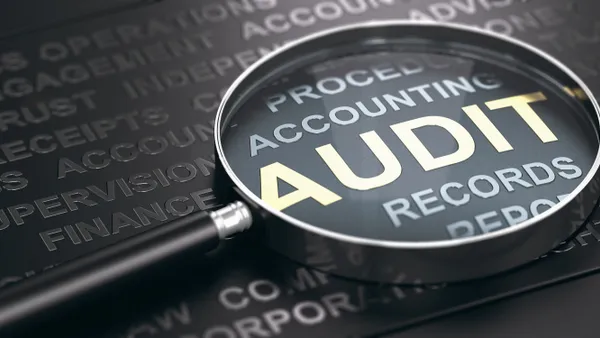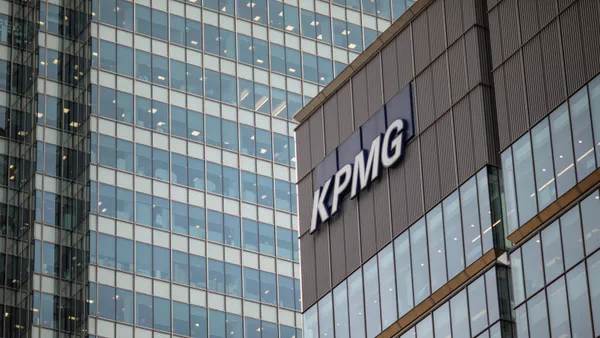As businesses transition to more environmentally conscious operating models, ESG-focused supplier networks are steadily gaining recognition as a critical component of corporate sustainability programs.
Over 90% of an organization’s greenhouse gas emissions come from its supply chain, according to the United States Environmental Protection Agency1. Given this fact, when suppliers adopt greener business practices, the improvements can significantly improve an organization’s Environmental, Social and Governance (ESG) score.
That’s welcome news for finance executives, who are under pressure from customers, employees and shareholders to deliver sustainable practices. A study by the Chartered Financial Analyst Institute found that 85% of their members consider ESG when investing2.
Finance and sustainability: Putting suppliers on a greener path
Many companies are adopting the “Green Ledger” to track their carbon footprint. Like financial ledgers, ownership of the green ledger falls under finance. As owners of sustainability, finance has a unique opportunity to develop and implement corporate-wide ESG policies and procedures, leveraging financial incentives and requirements across the organization’s supply chain.
“The finance departments has an umbrella over the entire company,” said Nate Moon, Global Head of SAP Business Network for Finance. “Finance looks over what happens inside and the outside the organization. They track and report business data. So it’s a logical place to focus on ESG.”
Adopting ESG-centric business practices allows corporations to embed sustainability in every aspect of their operations. It is also becoming a strategic imperative to satisfy regulatory requirements and ever-increasing stakeholder expectations.
Given this pressing mandate from stakeholders, how does your finance department begin integrating leading ESG practices into the supplier network? What incentives should your company offer suppliers to improve and align their environmental practices? And how can your company play to its strengths and accelerate the creation of an ESG-focused supplier network?
“One of the biggest challenges is knowing where to start,” said Moon. “Everyone wants to improve ESG, but there is a universe of things that a company could do. So you need to evaluate what is most relevant for your business, your brand identity and your customers, and start there.”
Establishing a strategy and setting priorities
The outsized impact of a supplier network creates a compelling case for making ESG a core component of the supplier network. Developing an ESG-focused supplier network requires a strategy, underpinned by robust metrics. A data-driven approach will allow your company to establish a baseline, develop goals, ensure visibility and accountability and monitor and report your progress. While some companies track and report hundreds of ESG-related metrics, your company may need far fewer.
As a starting point, aligning your metrics with relevant standards, such as those created by the Sustainability Accounting Standards Board, can demonstrate your commitment to sustainability and make it easier to analyze your ESG-related progress3.
Selecting suppliers and providing the right incentives
Creating a supplier communication strategy is another crucial step. To establish a strong foundation and build momentum, identifying specific suppliers of a certain size or type as potential sustainability partners can make sense. The approach and incentives will vary depending on the suppliers you select as ESG partners.
Forcing a supplier to adopt greener business practices to continue doing business with your company is a valid approach. However, other refined tactics can be less aggressive and more appropriate for deeper, mission-critical relationships.
For example, working towards a shared sustainability goal with a highly integrated supplier can be mutually beneficial. The shared vision, partnership and progress to a more environmentally conscious relationship can provide a marketing opportunity for your business and its suppliers to stand out in an increasingly crowded marketplace.
For smaller suppliers, there are other options. Ensuring adequate cash flow is a significant concern for small and medium-sized businesses. A sustainable financing program that rewards suppliers with preferential payment terms and early payment rates for adhering to environmental and social practices and standards can provide a significant incentive.
Your company can also use innovative ways to change your suppliers' behaviors. For example, for large suppliers you view as critical, long-term partners, providing access to funding to improve their ESG-related practices may make sense. Whether that funding is provided via a rebate, credit or a third-party financial institution, the use of creative approaches can accelerate your journey toward a greener supplier network.
Playing to strengths
Given the breadth of activities that fall under the sustainability umbrella, figuring out how and when to build an ESG-focused supplier network can prove overwhelming. First, it requires designating an individual to champion the effort and focusing on activities relevant to your company and brand.
For instance, if your company has already invested in sustainable packaging for its products and has developed expertise in that area, helping suppliers to do the same plays to strengths and can generate results quickly. Similarly, if your company has earned Leadership in Energy and Environmental Design (LEED) certifications for its buildings, you may be in an excellent position to help suppliers navigate the process.
By using a well-thought-out strategy, robust analytics, compelling incentives and a degree of creativity, finance can play a decisive role in the pursuit of a greener supplier network. Trusted by millions of companies around the world, SAP Business Network connects people, processes, and systems across multiple enterprises to digitize transactions and create transparent, resilient and sustainable supply chains. To learn more about this B2B collaboration platform, visit www.sap.com.
2 https://www.cfainstitute.org/-/media/documents/survey/future-of-sustainability.ashx#:~:text=85%25%20of%20CFA%20Institute%20members,up%20from%2073%25%20in%202017.&text=Client%20demand%20as%20a%20motivation,in%20the%20last%20three%20years










